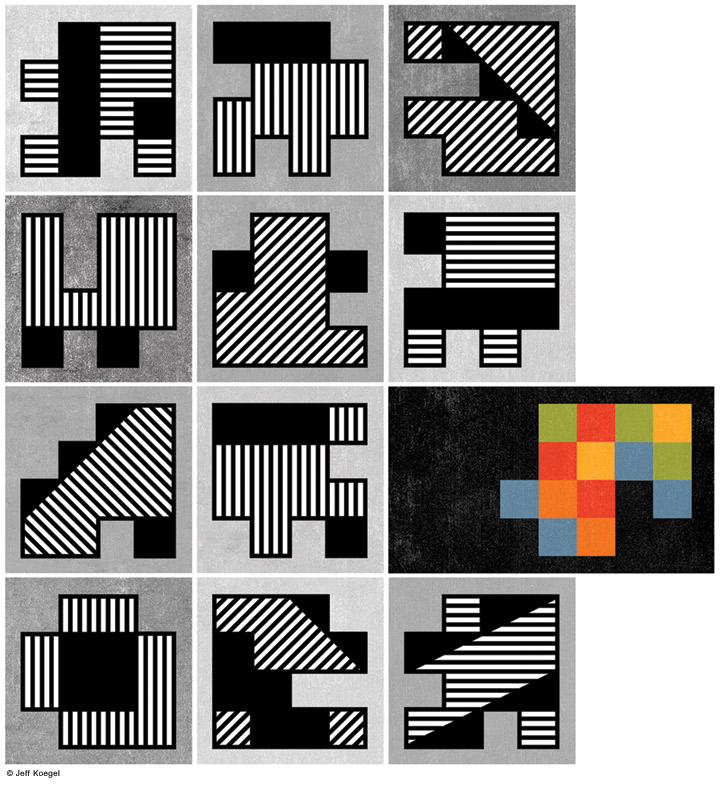
As Penn’s Orphan Disease Center marks 10 years, new technologies promise major gains in treatments and cures.
“Here’s to hope, shining from Jim’s lab in Philadelphia as a beacon around the world,” said Penn President Amy Gutmann, kicking off the 10th anniversary symposium of the Orphan Disease Center—Jim being James Wilson, the Rose H. Weiss Professor at the Perelman School of Medicine and director of the ODC, established at Penn a decade ago to “facilitate and fund research, and develop transformative therapies for rare diseases with significant unmet need,” in the words of its website.
Held virtually from February 24 to 25 and titled “A New Era of Rare Disease Diagnostics and Therapeutics,” the symposium featured panels on ethics, patient voices, global access to treatments, patient registries, and industry perspectives and incentives. The high-powered lineup of speakers included Wilson; founding donor George Weiss W’65 Hon’14; acting Food and Drug Administration commissioner Janet Woodcock; Francis Collins, director of the National Institutes of Health; former UK Prime Minister David Cameron; and Nobel Prize winner Michael Brown C’62 M’66 Hon’86, whose keynote address—“An Orphan That Saved Millions”—described how his work on the rare condition familial hypercholesterolemia spawned the statin drugs used by 20 million people to control blood pressure, lower cholesterol, and prevent heart attacks. (Symposium sessions can be viewed at the center’s website.)
Citing the dictionary definition of orphan as meaning “isolated, abandoned, not supported, or not funded,” Wilson clarified that “abandonment in this context does not refer to the love and commitment of family, friends, and caregivers for those living with rare diseases”—who in fact play a critical and central role in the field—but the reluctance of the pharmaceutical industry and other stakeholders to devote resources to the roughly 7,000 known rare genetic diseases. “Lost in this calculus,” he added, is the fact that, while numbers for any one condition are small, in the aggregate “approximately one in 10 people are living with a rare disease.”
In recent years, several therapeutic platforms with the “potential to treat diseases at their root” have emerged, he said, “which really form the basis of our work.” He listed protein replacement therapy and messenger RNA (mRNA) therapy [See “The Vaccine Trenches”]; gene therapy, the focus of Wilson’s own work; and—“the new kid on the block”—genome editing. This technology “really cuts at the heart of the pathogenesis of these diseases by correcting the specific mutation,” but “while very powerful in concept, many forms of genome editing may be limited to individual patients with individual mutations,” he said.
The ODC fields two flagship programs to promote research. JumpStart involves collaborating with rare disease communities to provide expertise and pilot grants to collect information and develop research toward treatments. In six areas designated as Programs of Excellence, the center is making a more significant commitment based on ODC’s potential to “add value” in realms where “transformative treatment is feasible,” Wilson said.
Grants generally run one to two years, at $50,000–$100,000 annually, with the hope that investigators will be able to go on to secure more stable government or corporate funding. ODC has funded 400 awards totaling more than $38 million to 120 institutions in 25 different countries; 76 grants totaling more than $8 million have gone to faculty at Penn and Children’s Hospital of Philadelphia (CHOP), he added.
George Weiss “didn’t even know what an orphan disease was” until a family member’s diagnosis led to “a long period of discovery” and a decision to approach Penn about starting a center “to help all kids” suffering from them, he said. He praised Penn Medicine leaders for their receptiveness and follow-through on the idea—and added that Wilson, besides being brilliant, has “business DNA, which is very rare in the scientific community.”
When Weiss proposed a walkathon to raise money and awareness in Philadelphia, Wilson recalled, he countered with a bike ride for representatives of different rare disease communities and their supporters. Dubbed the “Million Dollar Bike Ride” by Weiss, it has become ODC’s “marquee fundraising event,” Wilson said. He initially thought $1 million was a stretch, but in 2019 (before a pandemic-induced pause last year), “we hosted 32 disease teams, 750 cyclists and volunteers, and raised directly and through matching funds $2.2 million for 36 awards.” (Registration is open for the 2021 event, which will be held virtually on June 12.)
The genetic diseases the ODC focuses on strike cruelly early in life, and Wilson highlighted the need for broader screening of newborns to identify patients early enough to benefit from new therapies. This is especially important since orphan drug approvals are likely to “grow exponentially” going forward and a “virtual explosion of gene therapy trials” is currently in progress. “To put it bluntly, we have a problem of our success,” he said. Approvals for new treatments for these diseases “will continue to outstrip our ability to detect them through traditional newborn screening programs—and this problem will only get worse.”
Wilson noted that the 1997 science fiction film Gattaca—which posited a seemingly implausible future where genetic testing at birth determined a person’s fate—was released just a few years before the human genome was successfully sequenced.
Already the time and costs required for sequencing have gone from 15 years and $300 million to something like 19 hours and less than $500, Wilson said, predicting that the costs will continue to drop. “A logical application of this powerful new technology would be to use whole genome sequencing at birth to diagnose those who will develop rare monogenic diseases, focusing on those that can be treated, and this would allow a newborn screening program to address what will be the escalating number of diseases for which there are treatments.”
NIH director Francis Collins—who led the Human Genome Project—echoed the theme of technological advance and emphasized the need for approaches to treat multiple diseases. “I don’t know of any other technology that has advanced this quickly,” he said of genomic sequencing. “People say you can’t ever get faster, better, and cheaper; you have to pick two out of three. This time we got three out of three.”
But while “the precise DNA misspelling responsible” for nearly 7,000 conditions has been identified, only 500 or so have an FDA-approved effective therapy. “That number grows, but grows slowly,” he said. “What you’d really like to have is a scalable approach that could be applied to lots of these disorders, not just one at a time.”
Reflecting on the center’s first decade, Wilson recalled “the futility of what our discipline was” in his early years as a clinical geneticist—and the distance traveled since. “Clearly, that’s changed in this new world, where there are potential answers, even beyond hope, for individuals living with rare diseases,” he said—creating a whole new set of challenges around ethics, access, reimbursements, and other issues. “These are high-class problems, but ones that we are definitely going to have to tackle.”
While the pandemic has posed significant personal and professional challenges over the past year, “I really believe that the setbacks that we’ve realized with COVID are even more galvanizing for the rare disease communities,” he added. “I can’t even speculate what it’s going to be like when we celebrate 20 years—but I know it’s going to be a very interesting ride.” —JP




